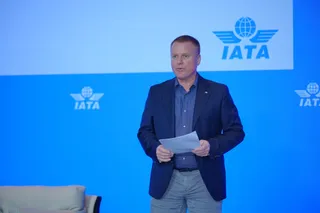US military, partner nations assess future warfighting capabilities at JWA 19
Contact Our Team
For more information about how Halldale can add value to your marketing and promotional campaigns or to discuss event exhibitor and sponsorship opportunities, contact our team to find out more
The Americas -
holly.foster@halldale.com
Rest of World -
jeremy@halldale.com
The U.S. Army Joint Modernization Command is supporting Joint Warfighting Assessment 19 (JWA 19), a joint multinational military exercise, which was conducted at Yakima Training Center and Joint Base Lewis McChord, Washington, from April 8, 2019, to May 11, 2019.
JWA 19 is the U.S. Army's largest annual joint-multinationallive exercise in which the U.S. military and partner nations assess 28 futurewarfighting concepts, capabilities and formations in a large-scale andrealistic battlefield exercise.
"JWA 19 is the Army future and modernization trainingground," said U.S. Army Brig. Gen. Johnny K. Davis, the commanding generalfor the Joint Modernization Command. "When we peer into future operationalenvironments and consider our capabilities within that environment, we need anavenue to assess and evaluate our capabilities. That's where JWA 19 comesin."
Large-scale battlefield exercises at JWA 19 are tracked andheavily influenced by computer simulators.
"Strategies, tactics and operations employed in thefield during JWA 19 are replicated in the simulators," said U.S. Army Lt.Col. James Teters, chief of the Multi-Domain Simulations Center, JMC. "Weare able to take a snapshot of our fighting strength before and afterbattlefield movements and simulations. This will help our forces betterunderstand and consider potential outcomes on the battlefield."
Teters, who is responsible for oversight of JWA 19 computersimulations that cover all five warfighting domains, said the purpose of thesimulations is to assess results of real-world actions taken on thebattlefield.
In addition to the Joint Modernization Command, personnelfrom the U.S. Army's Training and Doctrine Command play a vital role at JWA 19to help assess force capabilities.
"We are the user representative for equipment and newconcepts (that are employed in JWA 19)," said U.S. Army Chief WarrantOfficer 4 Richard W. Godfrey, the senior technical advisor for Training andDoctrine's capabilities manager of electronic warfare. "We take user (soldier)feedback and develop requirements that state what about the equipment andconcepts should remain the same and what should be improved and then send thatto military leaders who can initiate that improvement."
The "in-the-dirt" execution and evaluation ofthese simulations takes place in many more environments than just on theground.
U.S. Army Futures Command, who leads U.S. Army efforts inmodernization, has prioritized a concept known as Multi-Domain Operationswithin JWA 19 training initiatives, said Davis.
Five warfighting environments (domains) that include land,air, maritime, cyberspace and space provide JWA 19's real-world venues forassessment and improvement.
"You can bring multiple domains into one space... butyou can imagine the complexity," said U.S. Army Lt. Gen. Eric J. Wesley,deputy commander of Army Futures Command and commander of Futures and ConceptsCenter, during an address to the NDIA Robotics Capabilities Conference inColumbus, Georgia, in April.
"Cyber, which happens in milliseconds; [electronicwarfare], which you can't see; air, which moves at about 500 miles an hour;sea, which moves about 30 knots; and ground, which moves around two miles anhour," Wesley adds, "gets really complex. It gets more complex whenyou add the fact that different services at different echelons are responsiblefor those domains," he added.
Wesley, whose responsibilities include cultivating a capableMDO fighting force, said that he hopes to accomplish this by the year 2028 tofollow the direction and vision of the Army Modernization Strategy, publishedApril 3, 2018, by the Secretary of the Army, Mark T. Esper.
Also included in the Army Modernization Strategy is theorganizational concept known as the Multi-Domain Task Force (MDTF), which isanother JWA 19 training initiative.
U.S. Army Col. Brandon C. Anderson, commander of the 17thField Artillery Brigade is the Multi-Domain Task Force Commander for JWA 19.
MDTF is focused on our adversary's warfighting capabilities,which would prevent our ability to effectively operate in their areas ofinterest, said Anderson.
MDTF also focuses on our ability to protect our own assetsas we move across multiple warfighting domains, he added.
"This is done by integrating [and coordinating] all thelethal and non-lethal enablers into one complementary effort," saidAnderson. "JWA 19 allows the Multi-Domain Task Force Headquarters to assessthe required capabilities to conduct Multi-Domain Operations in a highlycontested environment including cyber, long-range precision fires, permissionsand the ability to visualize and command battlefield movements in alldomains."
Along with MDO and MDTF is a U.S. Army-wide traininginitiative known as Joint Multinational Interoperability (JMNI), which aims tomaximize U.S. military capabilities alongside partner nations on thebattlefield.
JWA 19 provides an avenue to cultivate effective communicationbetween the U.S. military and the participating partner nations of UnitedKingdom, New Zealand, Canada, France, Australia and Singapore.
"We all have different systems and assets," saidDavis. "We have to determine how we can create a cross-domain solutionthat allows us to operate together on the future battlefield."
British Army Lt. Col. Kevin Taffe, chief, MultinationalInteroperability, JMC, said that exercises like JWA 19 allow for the evaluationand improvement of the U.S. military's capability to effectively operatealongside any one of its international partners by analyzing feedback from bothU.S. and partner-military forces that is gathered before, during and after anyparticular action that is taken on the battlefield.
"Our senior leaders are very serious about operatingeffectively alongside one another and leveraging our capabilities as equalpartners," Taffe said. "We (JMC) set the standard for our futurecapabilities, create milestones and roadmaps to get to that level and thenmeasure against our assessments to refine and improve each year."
Training concepts MDO, MDTF and JMNI are year-round areas offocus for the U.S. Army, as well as its six modernization priorities, which areall being assessed at JWA 19, Davis said. Those priorities are Long-RangePrecision Fires, Next-Generation Combat Vehicles, Future Vertical Lift (aerialvehicles), Air and Missile Defense, Networking Systems and Soldier Lethality.
"We are putting in a lot of time and effort to ensurewe provide capabilities to our men and women in uniform, quickly and at a levelthat ensures success on the future battlefield," said Davis. "It ishistoric to have the opportunity to operationalize new concepts like these.We're helping the Army to modernize and move forward into the future, and weare better today than we were yesterday."

.png/r%5Bwidth%5D=320/7f2021f0-9a0d-11f0-b8f7-272ce5993c28-nano-banana-2025-09-24T11-07-03%20(1).webp)
